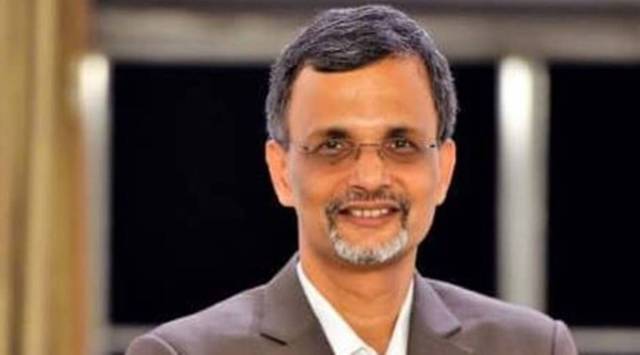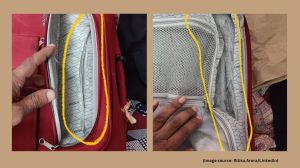GDP estimates for current fiscal likely to be revised upward: CEA Nageswaran
The National Statistical Office (NSO) released the second advance estimate for financial year 2022-23 on Tuesday wherein it retained the full-year GDP growth estimate at 7 per cent from the first advance estimate released in January.
 Chief Economic Adviser V Anantha Nageswaran
Chief Economic Adviser V Anantha Nageswaran With high-frequency indicators such as passenger vehicles sales showing a better sign of recovery, Chief Economic Adviser V Anantha Nageswaran on Thursday said that the economy is likely to see an upward revision in its GDP estimates for the current financial year 2022-23 when the revised estimates come in later next year. Nageswaran also pointed out that the notion of using the letter K to denote economic recovery for urban and rural areas is “somewhat wrong”, saying that it’s not the case that rural recovery is negative, instead urban recovery is proceeding at a faster pace than rural recovery.
“Given the high frequency indicators and the pace at which they’re recovering… I do believe that later on, when you see the current year’s data next year, when they get published… my guess is they are more likely to do upward revision than downward revision,” Nageswaran told reporters.
The National Statistical Office (NSO) released the second advance estimate for financial year 2022-23 on Tuesday wherein it retained the full-year GDP growth estimate at 7 per cent from the first advance estimate released in January. October-December GDP growth came in at three-quarter low of 4.4 per cent mainly due to a negative manufacturing print and a slowing consumption momentum.
The NSO on Tuesday also revised GDP growth data for the past three years — 2019-20, 2020-21 and 2021-22 along with release of the second advance estimates of GDP for 2022-23. While the growth rate for 2021-22 has been revised up by 40 basis points to 9.1 per cent from 8.7 per cent, the GDP for 2020-21 (Covid impacted year) too has been revised upwards to (-) 5.8 per cent, from (-) 6.6 per cent. For 2019-20 also, the growth has been revised upwards to 3.9 per cent, from 3.7 per cent.
When asked about the differing rates of recovery in urban and rural areas, the CEA said one segment slope is more positive and the other one’s slope is less positive, but it is positive. “It is not that it is negative. And therefore, I will say we have a recovery where urban recovery is proceeding at a faster pace than rural recovery. But you can’t say that rural recovery is not happening. Urban recovery is happening, the speed is different,” he said.
Nageswaran also said that real interest rate is not very high at the moment, adding that there is pent-up demand in certain sectors because the potential growth rate is 6-6.5 percent as per some estimates. “…and our average growth rate over these last three years, if you compare, is still well short of the potential. So there is room for pent up demand to come through,” he said.
On the question of high rural inflation, he said it doesn’t take into account the subsidised distribution of foodgrains and hence, may not be reflecting the true cost of living. “See many other countries have in the last three years taken into consideration the fact that their respective governments have provided a lot of relief to specific segments of the population and therefore when they take the price, if 30% of the population pays the market price, another 30% pays a reduced price and another 40% pays no price at all. They have actually taken weighted average pricing. It has happened in countries like Korea, Thailand, even Singapore etc…ultimately if a CPI index is supposed to capture the cost of living…it should include both subsidised and non-subsidised prices, but that is not we are not doing that. So in that sense if you say a rural population faces a higher inflation rate, it doesn’t take into account the fact that the bulk of the world population may be getting their essential food grains at zero cost. So is that the true cost of living increase that the rural population is facing? I don’t think so,” he said.




- 0115 hours ago
- 0215 hours ago
- 0315 hours ago
- 0415 hours ago
- 0516 hours ago



























